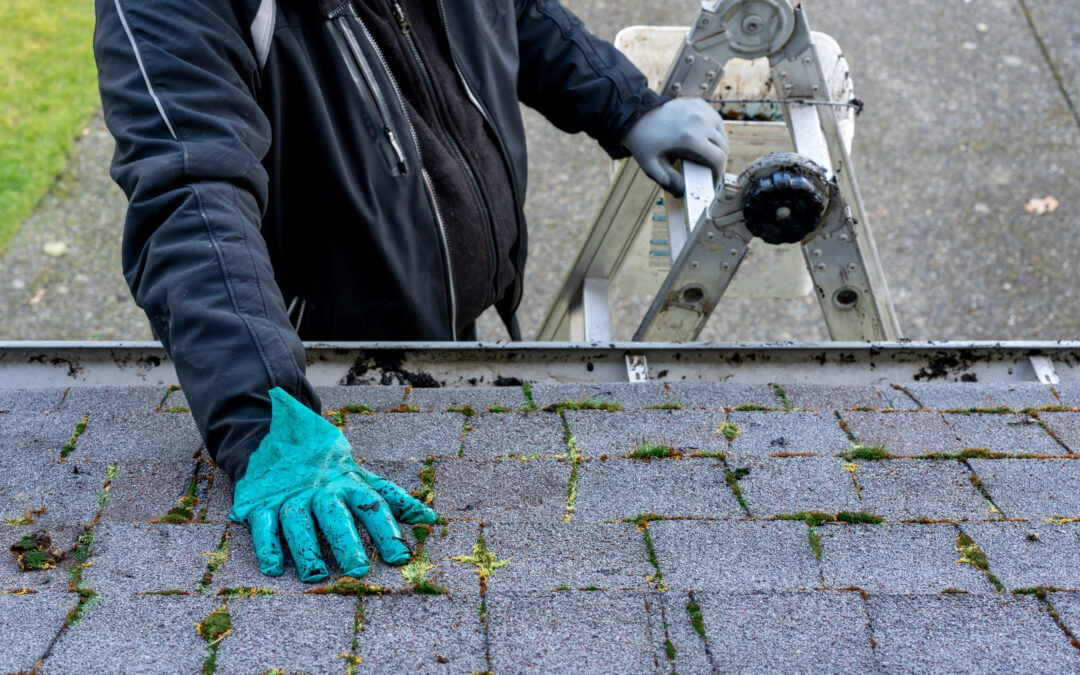Midwest winters can take a toll on your home’s roof – the ice, wind, and snow wreak havoc on its foundation as it takes the brunt of the season’s climate. The harsh weather can also damage your roof’s shingles, gutters, spouts, and more.
After a long winter, it may be time for a complete roof inspection to identify any vulnerabilities moving into the spring season. Here are six of the best spring roof maintenance tips we recommend.
6 Spring Roof Maintenance Tips
#1. Inspect for loose, curling, or damaged shingles and any nails popping out. If any shingles are curling, loose, or damaged, you should replace these right away. If nails are popping out, you should hammer them down. Make sure your shingles are repairable – if they’re too worn out, you may need a roof replacement, depending on the roof’s age and condition.
#2. Inspect Soffits, Fascia, and Vents for animal nests and debris. Soffits are metal or wood panels along the underside of the roof between the wall of the house and the roofline, while fascia is the metal or wood boards along the roofline or behind the eavestrough.
The maintenance and care of both are vital for the life span of a roof, so they’re not to be overlooked. Check whether the soffits or fascia have any soft spots, holes, or damaged parts. Depending on their condition, they may need to be repaired or replaced.
#3. Clean out debris from the roof and gutters. Repair and inspect your gutter system for any leaks. While there are certain details you may be able to identify yourself from ground level, leave any larger cleaning projects to a professional. A professional can remove debris such as nests, branches, and leaves from downspouts and rain gutters to improve drainage, as a buildup will prevent water from draining properly. Excess moisture will cause shingles to degrade and weaken, thus leaving a property susceptible to leaks.
Also, be sure to remove moss or any debris on the roof that can keep your roof moist. Remove any tree branches covering your roofing system to allow sunlight to dry your roof properly. Moisture over time is very damaging to a roof.
#4. Check and repair loose flashing or metal strips that seal gaps to prevent water from seeping underneath your shingles. Flashing connects different elements of a roof, such as skylights, windows, or where two slopes of the roof come together. If the caulk is cracked or there are rust spots on the flashing, both issues must be fixed immediately to keep water damage from occurring.
#5. Check for signs of fungus or algae. If your roof is starting to collect moss or algae, install zinc or lead strips to combat the issue. Moisture gathers on roofs throughout the winter, often leading to mold or algae growth. While inspecting your shingles, make sure to check for signs of growth.
While there are DIY options for mold removal on your roof, we recommend talking to a professional before pouring chemicals or treatments on your roof.
#6. Document any damages. If you notice ANY roof problems, document them with photos. Your home insurance will be able to cover some roof damage, especially after a storm, but you’ll need to provide evidence of the extent of the damage. It’s also important to note what will need to be fixed by yourself or a professional.
Werner Roofing is Here to Help This Spring
Do you need assistance with your gutter upkeep during the spring? At Werner Roofing, we can help! We can come to your home and inspect the area and let you know exactly what needs to be done so you can have a stress-free spring despite the weather. Give us a call to talk to one of our roofing and gutter experts today.


